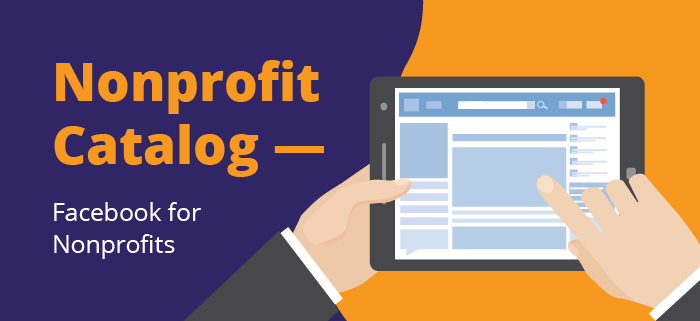Facebook for Nonprofits – Nonprofit Catalog
Nonprofits and for-profit businesses alike use social media platforms such as Facebook, Twitter, and LinkedIn to spread awareness and engage with their consumers or supporters. For nonprofits, social media outreach allows organizations to engage new and existing supporters more easily.
According to 360MatchPro’s fundraising statistics, 56% of nonprofit donors say Facebook, specifically, has the largest impact for them.
What is Facebook for nonprofits?
Over 2.9 billion people use Facebook worldwide. It’s one of the most active social media platforms that currently exists. Because of this, Facebook can be a powerful tool for nonprofit organizations when it comes to their marketing and fundraising efforts.
The social media platform can be used for posting updates, sharing photos, connecting with supporters, and even raising funds directly. Nonprofits looking to see the most impact, however, should evaluate their organization’s goals and use donor data to target their specific audiences. By tracking engagement metrics on Facebook and other platforms, you’ll be able to better understand what type of content your donors are looking for.
Facebook for nonprofit marketing
Setting up a profile and using Facebook is fairly straightforward. However, there are some best practices you can follow to make sure you get the most out of your online presence:
- Incorporate Facebook into your social media marketing strategy. Use Facebook in combination with other social media platforms and traditional marketing channels like email. Add links in your Facebook posts that lead users to your other channels, and align all of your content with your organization’s overall marketing goals.
- Discuss and plan out various posts you can share with your audience. These posts can be in the form of text, images, videos, stories, livestream, and long-form content. Create a content calendar as part of your strategy to ensure your content is balanced and intentional.
- Start using Facebook ads. You can design your advertisements to be more traditional graphics-based ads, promotional posts, or videos.
Facebook nonprofit fundraising

Many organizations, especially smaller nonprofits, choose to fundraise directly through social media platforms, such as Facebook or Instagram, instead of using dedicated online fundraising software. That’s because it helps nonprofits reach a broader audience, establish a sense of community, and leverage the platform’s built-in tools for effective fundraising campaigns.
To get started with Facebook fundraising, check your nonprofit’s eligibility. If you meet the requirements, Facebook will verify your account and you can begin collecting donations directly through the platform.
In addition to hosting your own fundraisers, you can encourage supporters to host peer-to-peer campaigns on Facebook. For instance, they might be interested in launching a birthday fundraiser, in which they invite their friends and family to donate to your organization on their behalf.
Here’s how a birthday fundraiser works on Facebook:
- The birthday person selects the “Raise Money for a Nonprofit” option and chooses your nonprofit from a list of eligible organizations.
- They fill in the fundraiser details, including the fundraising goal, campaign title, and description.
- Family and friends see the fundraiser post on their News Feed or profile and can make donations through the touch of a button.
As the campaign progresses, the creator can share updates on the fundraiser’s status, express gratitude to donors, and showcase how the funds will be used by the nonprofit.
Additional Resources
Nonprofit Catalog – Read up on more nonprofit essentials by exploring our Nonprofit Catalog.
Digital Marketing for Nonprofits | A Comprehensive Guide – Learn how digital marketing can benefit nonprofit organizations.
215+ Fundraising Ideas for Your Organization – Explore hundreds of fundraising ideas for nonprofit organizations.


